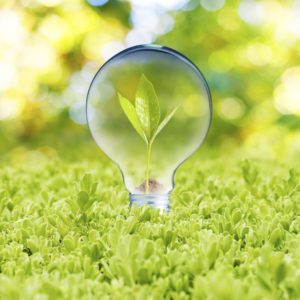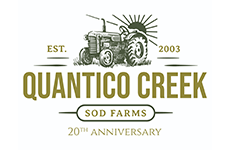
Natural grass is vastly superior to artificial grass due to how it supports the ecosystem around it and doesn’t harm the environment.
A lawn is an important part of any property. It provides curb appeal and tells a message of responsibility and care. A nice lawn will make for happy neighbors, and it’s always a joy to spend some time with family and friends while you’re outside on a dense covering of grass. In recent years, artificial grass has gained a little more traction as a secondary option to natural grass. While natural grass does require a little more maintenance, it is simply the superior option when compared to artificial grass.
Air Quality
Natural grass, like all plants, improves air quality mainly through photosynthesis.
First, natural grass creates oxygen that all living things need to breathe. It is constantly outputting oxygen as part of the photosynthesis process. This greatly improves air quality and fresh oxygen for humans as well as wildlife.
Second, grass pulls CO2 from the air, as well as other impurities and pollutants. So, in short, natural grass is always removing CO2 as well as other impurities from the air and exchanging it for oxygen during the process of photosynthesis.
Soil Quality
Natural grass removes CO2 from the air, which improves air quality, but it also improves soil quality. The CO2 that is removed from the air gets stored in the soil and is eventually turned into organic matter.
Natural grass is also excellent at purification. It helps to purify polluted rainwater and runoff from various rivers and lakes. In addition, the expansive root system prevents soil erosion by holding the soil together. Extreme soil erosion and stormwater runoff can lead to significant property damage. Artificial turf can’t protect against this, and you would need to add significant hardscaping to the property to make up for the loss of these abilities.
Natural grass is also better for your soil because it supports microbial health.
Wildlife
A lot of wildlife relies on natural grass to survive. Many bugs and invertebrates need healthy soil—in fact, one way to check the health of your soil is to dig some up and count the earthworms within. Fewer earthworms mean less healthy soil. It might sound like a benefit to host fewer bugs and the like in your yard, but they are critical to the health of the environment and feed many other wildlife species that people love to observe, such as birds.
Grass is also an important food source for some herbivores that like to hang out around our yards, such as rabbits. These animals rely on natural resources, and an artificial lawn does not support any of these needs while also harming the air and soil quality of your property.
The Downsides of Artificial Grass
Artificial grass is bad for the environment, as it is made of plastic and the manufacturing process produces pollutants that harm the environment. In addition, due to it being plastic, it is difficult to recycle and often ends up in a landfill. Sod is all-natural, which means it never needs to be replaced, only maintained. Artificial grass, on the other hand, is plastic. Maintenance will only get you so far, and eventually, it will need to be replaced.
Have More Questions? Stay in Touch!
Order early and order often to ensure the best service possible. Contact us through our online page. Please find us at 27616 Little Lane, Salisbury, Maryland 21801. Our phone number is 410-726-6103, and our fax number is 410-742-6550. Speak to Jason Anderson for Turf Grass Sales. Reach him by email at jason@quanticocreeksod.com. Finally, follow us on social media on Facebook, LinkedIn, and our blog!
